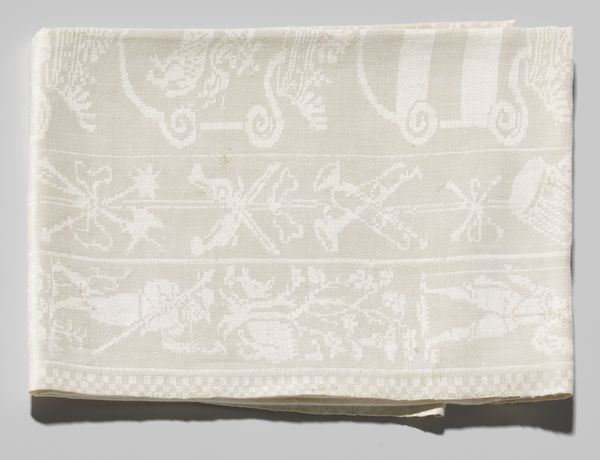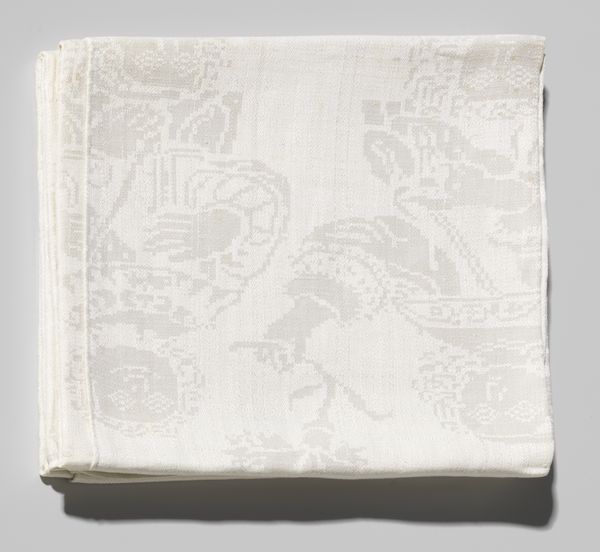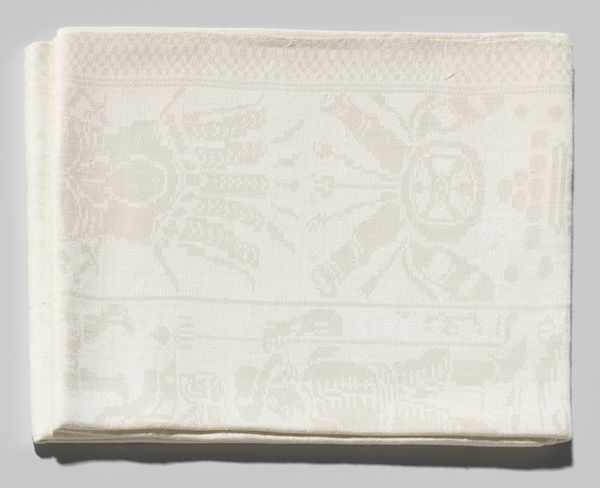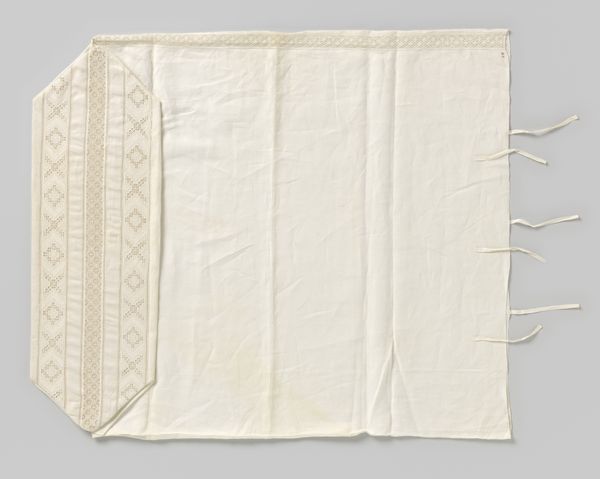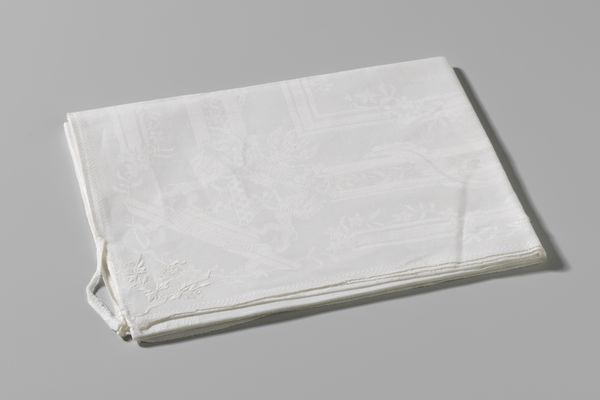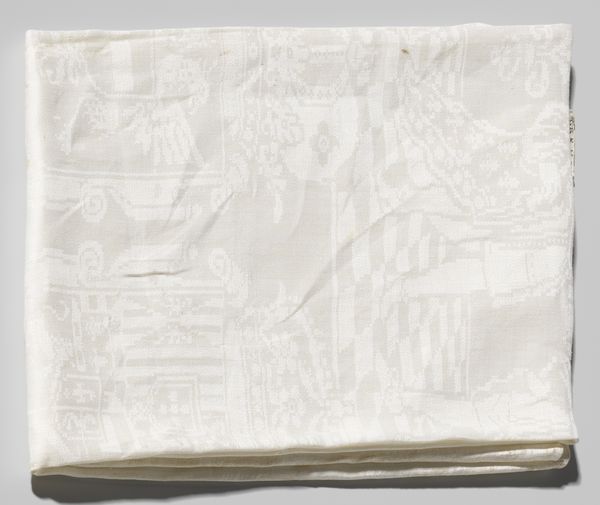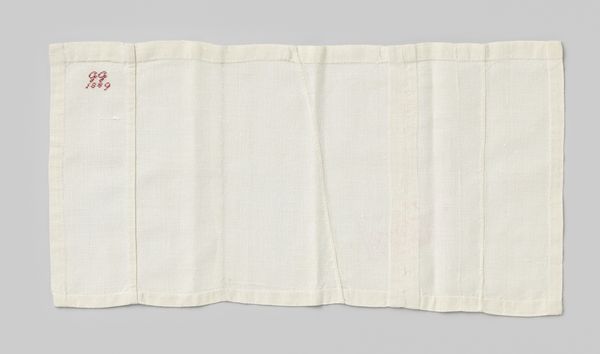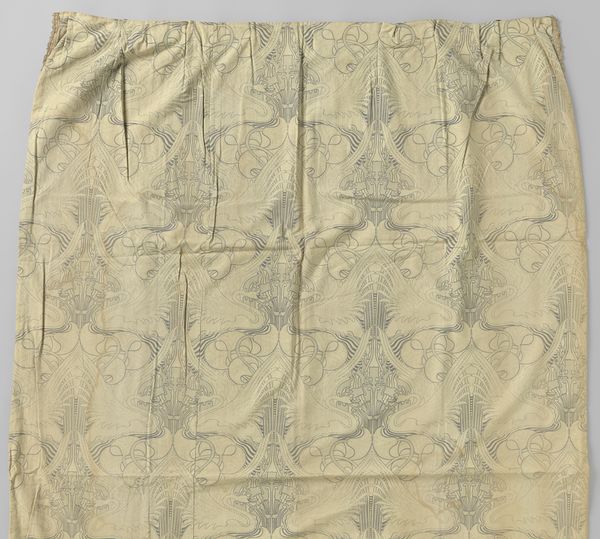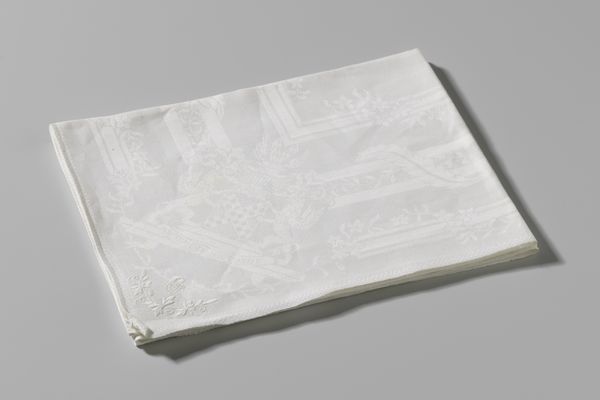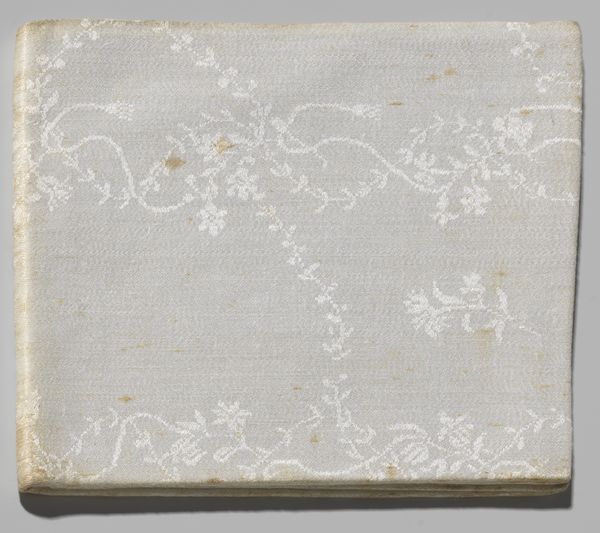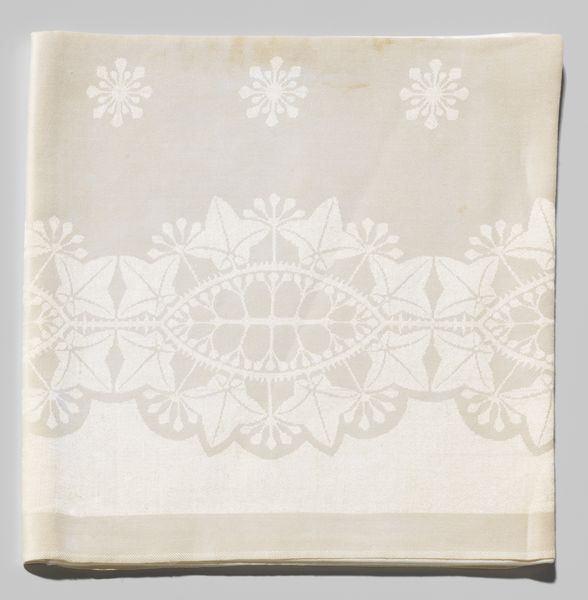
weaving, textile
#
baroque
#
weaving
#
textile
#
geometric
#
fabric design
#
decorative-art
#
imprinted textile
Dimensions: length 96.8 cm, width 72 cm
Copyright: Rijks Museum: Open Domain
This linen damask napkin, now in the Rijksmuseum, intricately depicts the triumphs of the Spanish Succession War, a conflict that engulfed Europe in the early 18th century. Heraldic symbols are prominently featured. Coats of arms, banners, and military trophies are woven into the fabric. These symbols aren't just decorative; they are potent assertions of power and legitimacy. The eagle, a symbol of imperial authority since Roman times, re-emerges here, embodying claims of dominion. Such symbols have a long and varied history. We see them repeated in different times and places. Consider the fleur-de-lis, a symbol of French royalty, which appears on countless emblems. Its origins are thought to be rooted in ancient religious iconography, transformed over centuries into a political emblem. In our collective memory, symbols such as these evoke powerful emotions. The eagle, for example, can stir feelings of pride, fear, or reverence, depending on the viewer's cultural and historical context. The creators harnessed these subconscious connections, engaging viewers on a deep emotional level. The Spanish Succession War napkin shows us how symbols are continually reinterpreted, their meanings shaped by the ever-evolving currents of history.
Comments
No comments
Be the first to comment and join the conversation on the ultimate creative platform.
